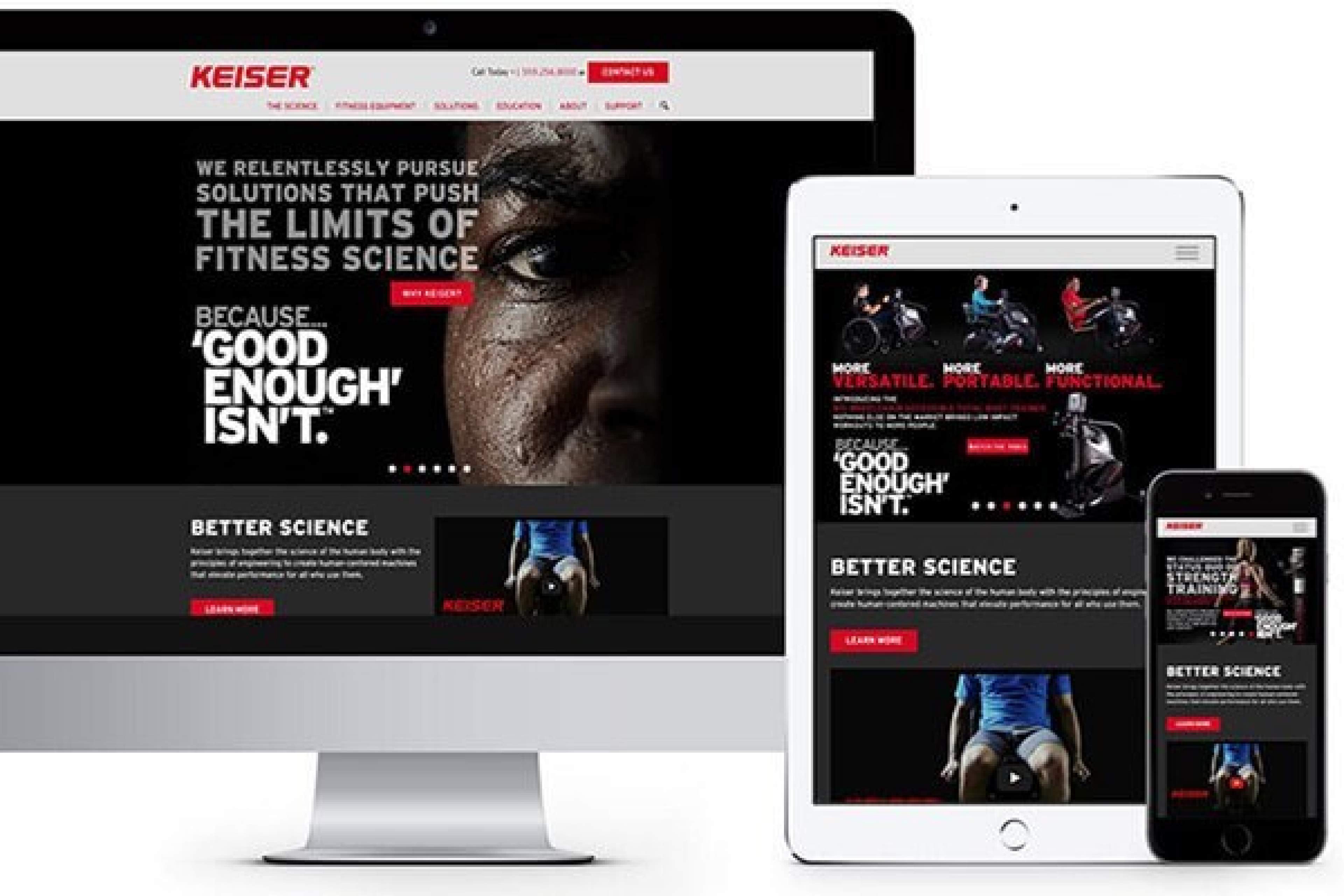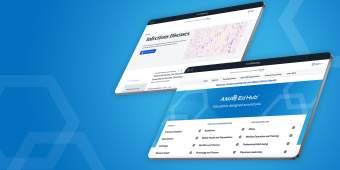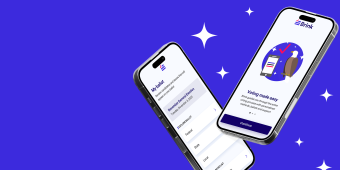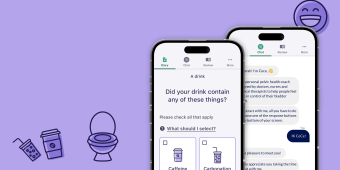Build vs. buy software: Making the right decision for your business

Every time we start an engagement, we sit down with our new partner to decide whether to build vs. buy software. It’s not something development shops typically do. We like our “hammer” of custom software solutions, but to be good consultants, we can’t treat every project like it’s a nail.
That’s why we help every partner weigh the advantages of buying software versus building. If we can find existing technology that meets their needs, we can save them tens of thousands of dollars.
We ran through this process recently with Keiser, a high-end fitness equipment manufacturer based out of California. They’ve come to us asking for three different pieces of technology, and each time we’ve taken them through our process to decide whether to buy vs. build software.
How to decide whether to build or buy software
Running a build vs. buy software analysis starts by understanding what a product actually needs to do. With Keiser, we were lucky enough to start with an Inception, our two-day project kickoff meeting. That lets us go deep into the business needs, so we can evaluate what a software solution would need to do. If you don’t have the option of participating in a strategy workshop, try writing out every feature you think your product needs. Then force-rank that list and come up with the essential tasks your software has to perform.
Once you know what your product has to do, you can decide the best way to get that functionality. There are plenty of off-the-shelf software advantages. In a build vs. buy cost analysis, off-the-shelf solutions often work out cheaper. They’re usually much quicker to implement, and maintenance and feature upgrades often come standard. If you’re planning to take maintenance in-house, using a common off-the-shelf business software usually makes it easier to train a new team. There’s also something to be said for not reinventing the wheel if there’s a working solution out there.
Off-the-shelf software packages can’t accomplish everything though. One of the biggest benefits of custom software development is the increased flexibility and adaptability it gives you. If you need unique features or have big plans for the future, it’s sometimes easier to build custom solutions in proprietary software than to try and adapt existing products to fit your vision.
Our software build vs. buy checklist
When we’re looking to make a buy or build software decision, we don’t rely on a complex matrix or framework. Instead, we ask four straightforward questions:
- What are the must-have features for this software? Then we determine if an existing product can deliver enough of those features to get the job done. If yes, we move on.
- What’s the timetable? The feature set will determine what’s going to be faster: off-the-shelf or custom. A super-tight timetable may make the decision for us.
- What’s the build vs. buy cost analysis? Once we know the features we need and the time we have to build them, we can start scoping out what it will cost to buy vs. build.
- What’s the ROI potential? This is the biggest question we need to answer: Will this product make enough money to justify its costs? Sometimes this answer will push us toward custom or off-the-shelf. Sometimes it will force us to return to step one and rethink our features until we have something we know will turn a profit.
Build vs. buy software: An iPad application sales tool
From the beginning, Keiser wanted a whizz-bang sales tool to showcase their products. Keiser’s sales force is decentralized, and there wasn’t an easy way to make sure everyone was selling products the same way. A sales tool would give reps one place to access professional presentations and videos. Keiser also hoped for a custom gym builder, so reps could let customers experiment with different gym layouts.
See our full range of mobile app development work
The team needed the tool before a series of conferences. Keiser was working with Plan B, a marketing agency, for the copy and art, so we knew we’d only have a few weeks after getting the materials to build the tool. We also knew that we’d be getting revisions from multiple people. Mobile development is expensive, and we started to see dollar signs.
Mag+, an off-the-shelf tool for building iPad apps, could give them all the features they truly needed. Some things, like the gym builder, would be off the table without custom development. But we’d also be able to make changes much easier. Mag+ allows users to build the app with InDesign, a common publishing tool. That means a designer can create the experience alone, instead of needing a mobile developer as well. It also makes it incredibly easy to add new products or videos to the app and push them out to every sales rep’s iPad with one update.
With the average value of a sale, an app created with Mag+ would only have to do its job one time to more than make its money back. The ROI made it a no-brainer.
We convinced Keiser to go with Mag+, and in the process cut their budget by about two-thirds. The sales people love it. We did a survey and 87 percent found it helpful. And if Keiser ever decides to build custom down the line, they can use the app as a prototype.
"The sales team, they're loving it. Sales are way ahead of where they were a year ago." —Brennon Bynum, Director of Marketing at Keiser
Build vs. buy software: A content management system
Keiser also wanted a new website ahead of its big conferences. Here, the complexity was all in the design and content, which Plan B was executing. Again, we knew we would have the same tight timeline between getting the content and turning around the product, so we wanted something we could build quickly.
Craft CMS ended up being the perfect solution. It’s a semi-custom content management system — think pre-made Lego blocks you can stack into a unique arrangement. It’s off-the-shelf enough to move quickly, but custom enough that we could easily build the templates Keiser and Plan B needed.
By blending custom and off-the-shelf, we were able to give them a solution in a tight timetable, on budget.
"We would not have had that sales app, we would not have had the website up if we were trying to do it ourselves. We have stuff up and running specifically because of third-party tools. It makes things happen quicker." —Brennon Bynum, Director of Marketing at Keiser
There has been talk of additional features down the road that might require custom development. When we get to that point, we’ll once again have a prototype that has served really well for a long period of time. We can easily replicate these features in a custom environment, and there won’t be a lot of duplicative effort. Or we could keep the Craft portion of the site and bolt on custom elements as needed.
Build vs. buy software: An e-commerce system
E-commerce was something we discussed in our initial Inception as a feature for down the road, when Keiser would have time to spin up a logistics system. Then this fall, they got the idea to sell their magnetic resistance bike for the holidays.
Keiser initially wanted to use this as an opportunity to build out the e-commerce functionality. With just one product for sale though, and only about a month until the holidays, we cautioned against it. That’s not a lot of time to create a system for fulfillment, credit card processing, all the things that go along with e-commerce. Instead, we recommended Keiser use an off-the-shelf solution to create one page where they could sell the bike. Then we could update the website with links and call-outs.
Using an existing product saved Keiser a lot of money and headache, and it gives them a chance to test out demand for e-commerce in a low-risk way.
Balancing the advantages of building custom software against off-the-shelf solutions
Overall, finding semi-custom and off-the-shelf solutions allowed us to de-risk projects that had a lot of dependencies and tight timetables. And we were able to give the Keiser team what they need. Salespeople are using the tool, traffic and engagement on the website are up, and they were able to open up an online store in time for the holidays.
Partners come to us with a lot of ideas. It’s our job to help them assess those ideas and determine the best way to execute them. If you need help making those calls, please don't hesitate to contact us.
Published by TXI in Product Innovation

Let's shape your insights into experience-led data products together.



